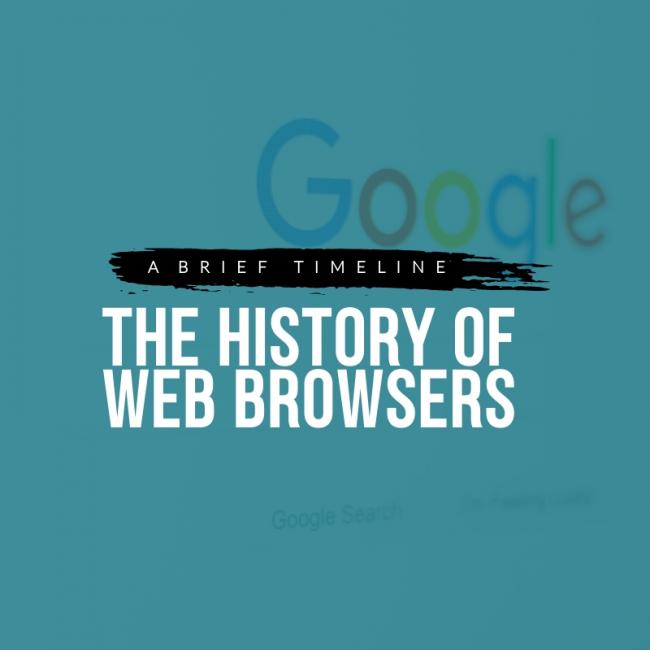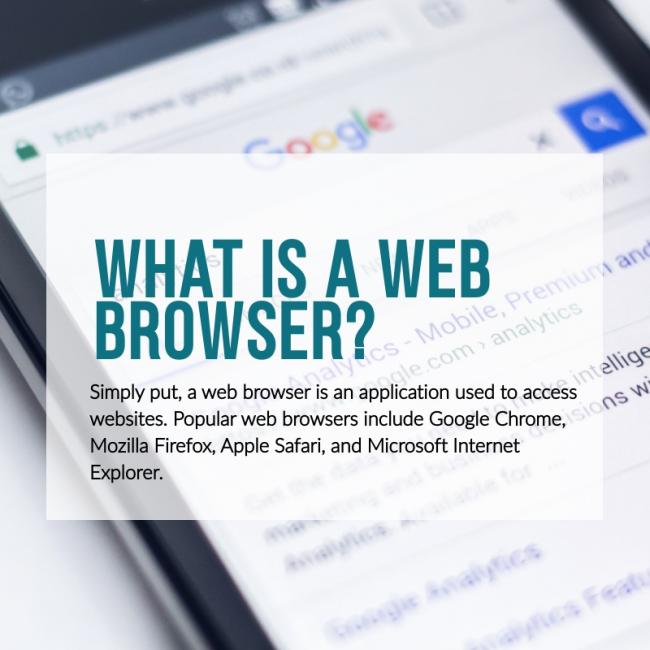The Brief Timeline: The History of Web Browsers

It’s been 30 years since the World Wide Web was invented by Tim Berners-Lee. The London based computer scientist also wrote the three essential technologies that are still largely considered the foundation of the modern-day internet: HyperText Markup Language (HTML), Uniform Resource Identifier (UFI), and Hypertext Transfer Protocol (HTTP). Berners-Lee also built the world’s first web browser – the WorldWideWeb.
Since the 90s we’ve seen tremendous steps forward when it comes to the development of internet browsers, cloud-based applications, and contemporary website design. It’s interesting to look back to see how far we’ve come.
Today we intend to do exactly that – create a timeline that briefly summarizes the history of web browsers since their first inception back in 1989, and what to expect in the near future.
But first let’s answer a few basic questions to get a better understanding of the modern-day web browser.

What is a web browser?
Simply put, a web browser is an application used to access websites. Popular web browsers include Google Chrome, Mozilla Firefox, Apple Safari, and Microsoft Internet Explorer.

How do web browsers work?
A web browser’s primary utility is to render HTML – the code that is used in web design and to mark-up web pages. The process begins when you input a website’s URL into the address bar of your browser. Your browser will then work to locate and request the website page’s information from its web server. The browser receives the file which informs it on how to display the information on the web page. Your browser will then interpret the file and display the page for you – as the user, to read and interact with.
A Brief Timeline of Web Browsers
1989 The World Wide Web is Invented Burners-Lee invents The World Wide Web and the very first web browser: WorldWideWeb (the name was later changed to Nexus). At the time Burners-Lee worked as a software engineer for The European Organization for Nuclear Research (CERN), and wanted to find a solution to accessing information across multiple computers. In March of 1989 he introduced a document called “Information Management: A Proposal”, which would eventually become the Internet. By fall of the next year Burners-Lee had written HTML, UFI, HTTP, and developed the very first web page editor and browser. If you’re curious to see what the Internet and early website design first looked like, you should check out our previous blogfirst website ever made. 1993 Mosaic is Developed by the University of Illinois Mosaic was developed by the University of Illinois’ National Center for Supercomputing Applications. Mosaic broke away from browser pack in its ability to display text and images together, and allowed for more accessibility. It wasn’t just IT academics and the highly technical crowd that could access the Internet – Mosaic allowed for regular folk to access the Internet too. 1994 Opera is Developed and the World Wide Web Consortium In 1994, Opera was developed as part of a research project at Telenor – one of the biggest telecommunications companies in Norway at the time. Version 2.0 was the very first public release of the browser, and is still used today with Version 62 having been released this past June. It was also in '94 that the World Wide Web Consortium (WWWC) would come to existence. Tim Burners-Lee would leave CERN to join the MIT, and founded the WWWC – an international community dedicated to the development of open web standards. WWWC would produce a number of revolutionary concepts that still remain to our modern-day, evolving tech sector. Decentralization, Non-Discrimination, Bottom-Up Design, Universality, and Consensus have all sparked the onset of new approaches and variations in academia, having opened up new schools of thought in politics, scientific research, education, and culture. 1996-1999 Internet Explorer Version 3 Rises in Popularity Internet Explorer 3 begins to see a rise in popularity due to the browser’s ability to support multimedia applications, and Internet mail. By 1999, Internet Explorer became the world’s most used web browser. 2003 Steve Jobs Introduces Apple Safari Steve Jobs unveils Apple Safari in 2003. It is released on desktop with Mac OS X Panther. Since then it has been included in all OS X operating systems. Before this, Apple Macintosh computers offered Netscape Navigator, Cyberdog and later Internet Explorer for Mac as web browser applications. 2004 Internet Explorer Versus Firefox In 2004, Firefox dominated as the web browser of choice. More and more people became frustrated with Internet Explorer’s lack of security, ease-of-use, and overall lack of effort to be better (largely due to its 95% market share at the time). Firefox was built by Netscape as an open-source solution to providing the competition that would contribute to the overall health of Javascript and the adherence of standards of the time. Without the rise of Firefox, millions of users today might still be using Internet Explorer to answer the Internet. 2008 The Rise of Google Chrome Google entered the web browser game in 2008 and released most of Chrome’s source code in Chromium – an open source project that “aims to build a safer, faster, and more stable way for all users to experience the web”. By 2015 Chrome would become the most popular web browser with 64.9% of users globally using Chrome as their primary web browser. 2015-2016 Microsoft Edge and Vivaldi 4 years ago Microsoft Edge was released as a replacement for Internet Explorer. It was released for Windows 10 and Xbox One in 2015. Vivaldi – a freeware, cross-platform browser was also released in 2016 as an alternative to Opera. What to Expect Going Forward Today Google Chrome reigns supreme as the world’s most popular web browser, having 60.1% of the web browser market share. Safari comes in second place with 12.7%, and Internet Explorer and Microsoft Edge having 6.8% of market share. As for deciphering which is the best web browser, that’s a tough call. As the tech industry continues to evolve, we look back to those 5 revolutionary concepts first outlined by the World Wide Web Consortium as guidelines to how we should interpret new situations when it comes to the Internet and how we access it.
